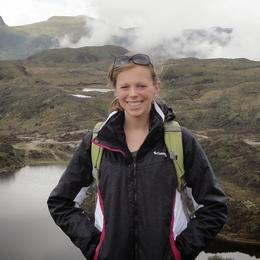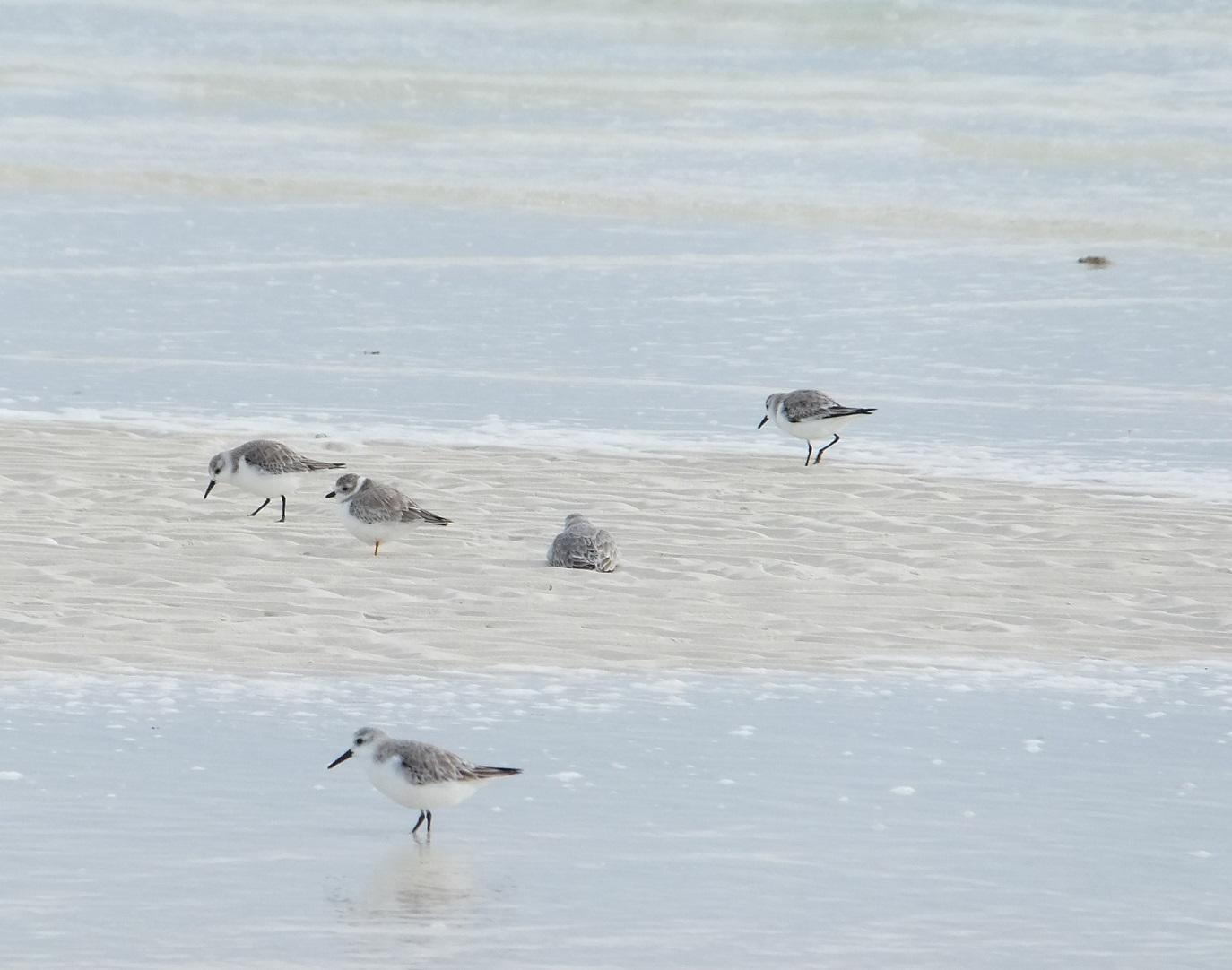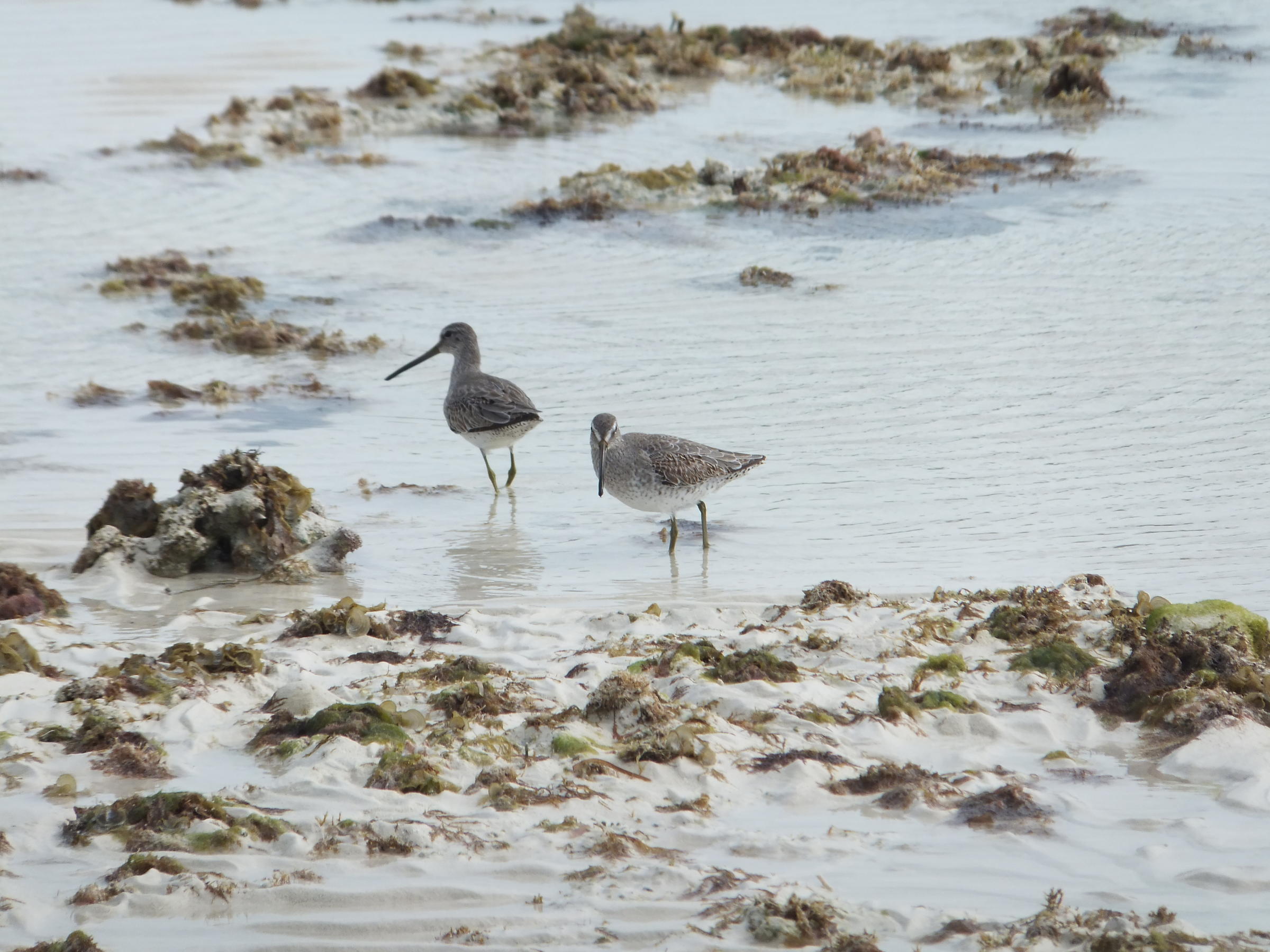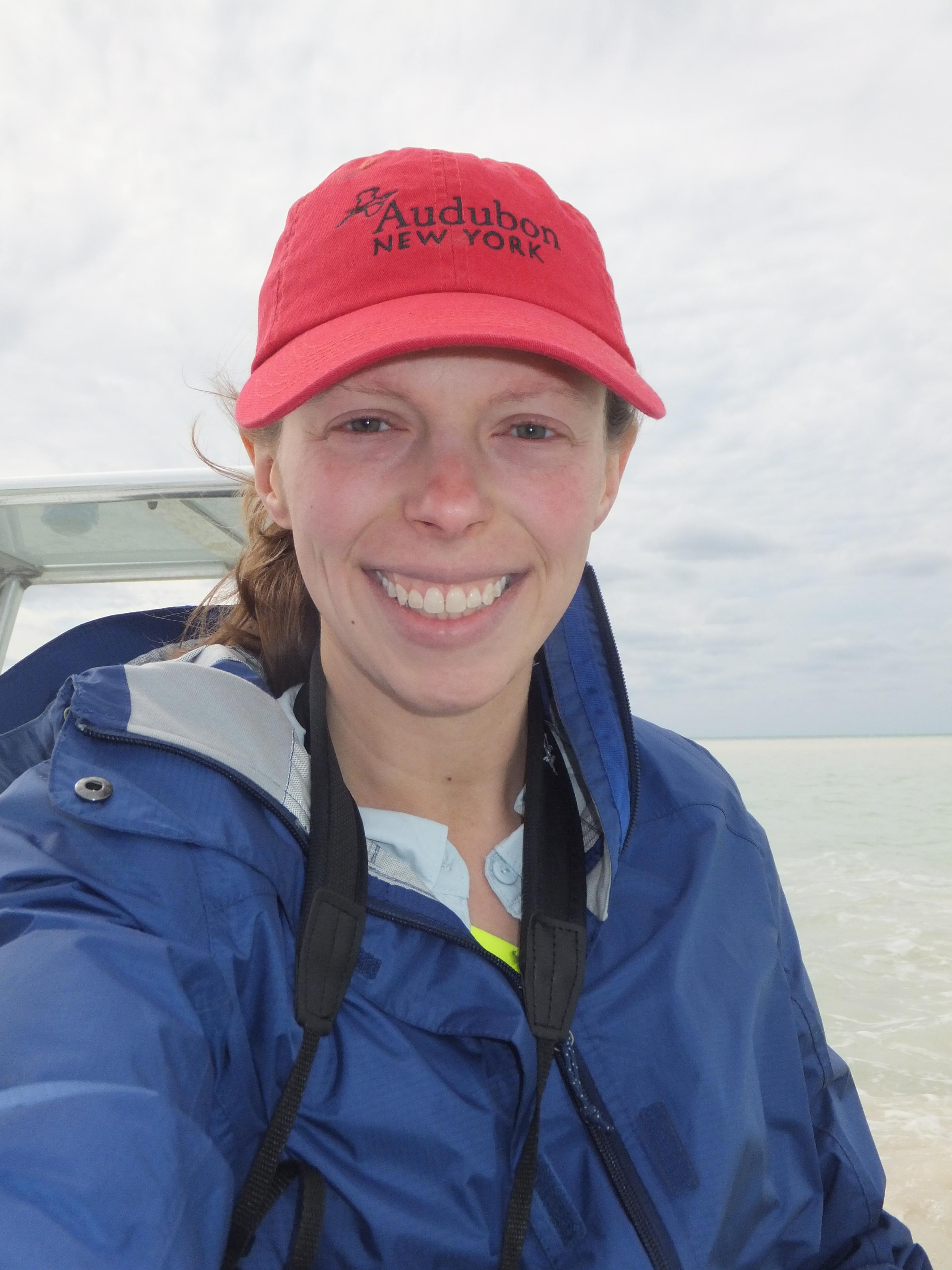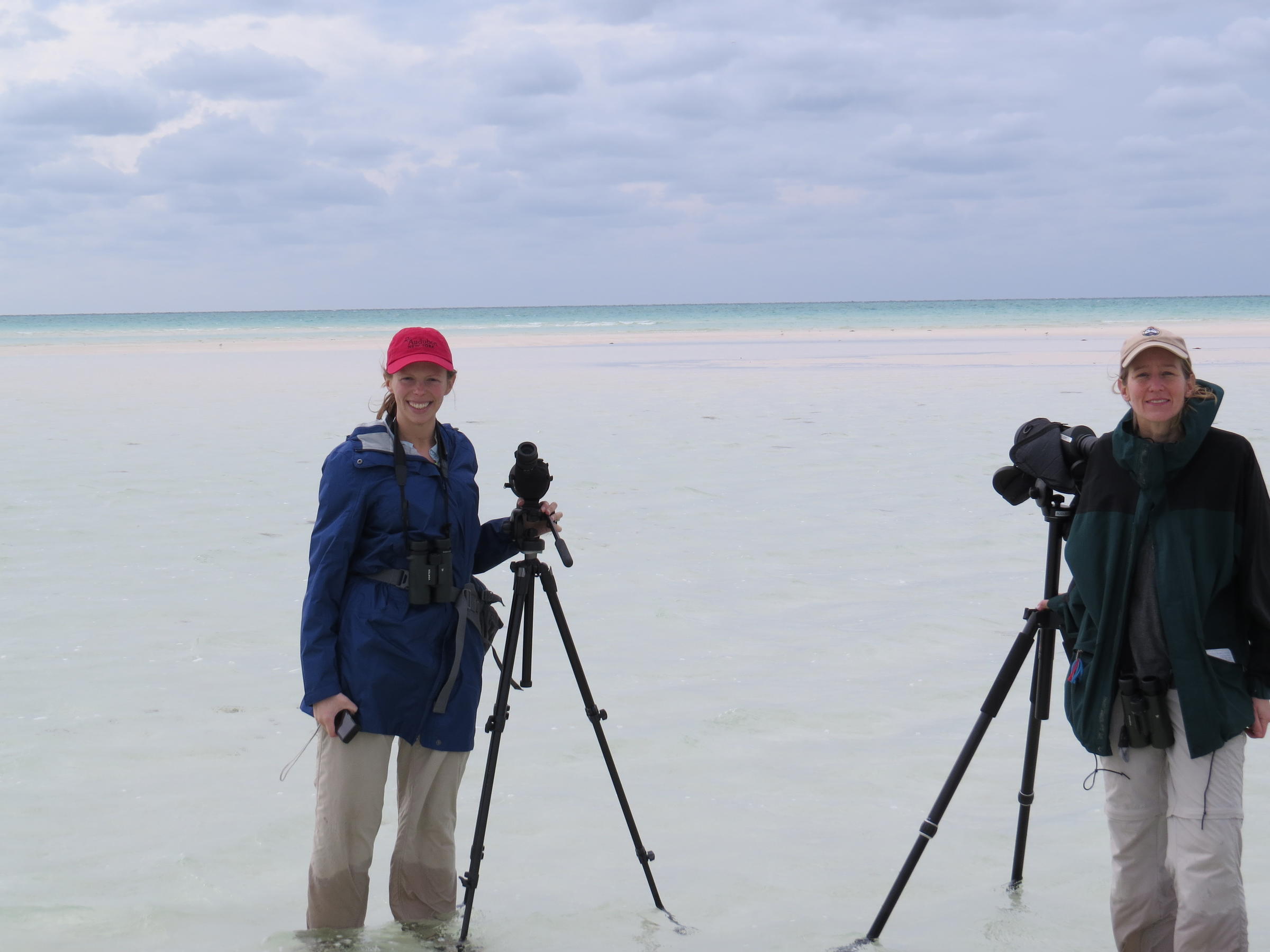I was delighted to find out that Matt Jeffery had invited me to travel to the Bahamas to survey for the National Audubon Society’s International Alliances Program. On January 18th, 2016 I flew to Freeport, Grand Bahama to meet up with Corrie Folsom-O’Keefe, the IBA Coordinator of Audubon Connecticut. Corrie and I were charged with surveying the East Grand Bahama National Park by boat. The following week, Cris Luttazi and Edie Ray would survey the rest of Grand Bahama by land. Our main focus was to find foraging and roosting Piping Plovers for the International Piping Plover Census. This census, led by USGS, USFWS, Bahamas National Trust, and the National Audubon Society, is a widespread effort to count plovers every five years. From January 18th to February 1st, 2016, staff and volunteers surveyed for Piping Plovers, Wilson’s Plovers, and Snowy Plovers throughout their winter ranges. As this survey period overlaps with BirdsCaribbean’s Caribbean Waterbird Census, which is conducted annually from January 14th to February 3rd, we were asked to also record all observed shorebirds and waterbirds. These censuses provide a snapshot of bird populations and document important wintering habitat. Data collected in previous surveys have resulted in significant conservation outcomes, such as the establishment of the Joulter Cays National Park.
Grand Bahama Island sits approximately 100 miles to the east of West Palm Beach, Florida. At the east end of the Island, large cays stretch out to the southeast, with creeks flowing between them. The shoreline along the southwestern side of the cays includes stretches of sandy beaches and bars, vegetated flats, and limestone formations, while most of the northeastern shoreline of the cays is dominated by mangroves. As Corrie had surveyed this area in 2014, she knew that the best way to find large flocks of shorebirds is to survey sandflats that become exposed at low tide and provide excellent foraging habitat. This year, we also discovered that scanning the shoreline while boating very slowly along the shore was an effective method for finding roosting plovers.
We surveyed the eastern cays of Grand Bahama on January 19th, 20th, and 21st, 2016 by boat and on foot. Over the course of our surveys, we detected between 17 and 18 Piping Plovers and 7 Wilson’s Plovers, none of which had bands. Plovers use some areas of the southwestern side of the cays for foraging at low tide, while other areas are high tide roosting spots. At high tide, both Piping and Wilson’s Plovers will use spots with just several meters of sandy beach. Wilson’s Plovers seem to have a greater preference for rocky shoreline than do Piping Plovers. We also observed six different types of long-legged waders and found 11 species of shorebirds, including large mixed-species flocks of Short-billed Dowitchers and Black-bellied Plovers.
This experience highlighted the importance of life cycle conservation for Piping Plovers and I’m so grateful to have been a part of it. We enjoyed talking with local birders, Bahamas National Trust staff, and Deep Water Cay Resort staff about our conservation work on plover breeding grounds. When we first met Michael Taylor, our local guide, he wasn’t very familiar with the Piping Plover. But, by the end of our surveys, he became really skilled at spotting and identifying plovers and other shorebird and long-legged wader species. Corrie and I were thrilled that Deep Water Cay Resort staff had taken such an interest in Piping Plover conservation. Also, we were thankful to gain local knowledge on the rest of the island’s plover habitat, which we shared with the next pair of surveyors. Thank you to the Bahamas National Trust staff for helping to coordinate our travel and accommodations, and to Deep Water Cay staff for being so kind and helpful. Thank you to Audubon’s International Alliances Program, Audubon Connecticut, and Audubon New York for giving us this opportunity.
Please note, Corrie Folsom-O’Keefe, the IBA Coordinator of Audubon Connecticut, also contributed content to this article.

